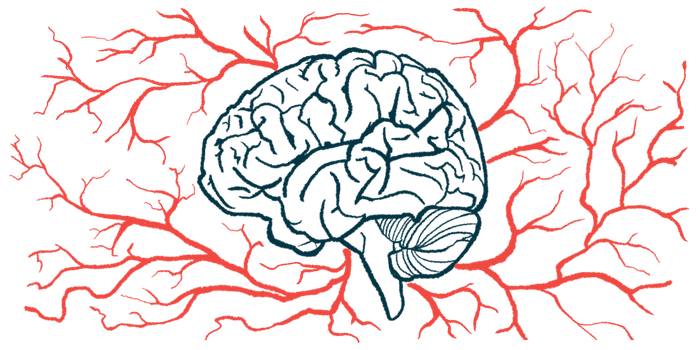Problems evident with protein that carries amino acids into brain: Study
Levels LAT1 transporter protein low in cerebral spinal fluid of Rett children

Rett syndrome is marked by unusually low levels of LAT1, a protein that’s needed to move amino acids — the building blocks of proteins — into the brain.
That’s according to the study, “Metabolic characterization of neurogenetic disorders involving glutamatergic neurotransmission,” published in the Journal of Inherited Metabolic Disease.
Its researchers are calling for investigations into how altered amino acid transportation might be targeted to treat children with Rett syndrome.
Rett syndrome research into diseases marked by abnormal glutamate activity
A main cause of Rett syndrome is mutations in the gene MECP2, which result in abnormalities during brain development. One key aspect of brain biology that’s altered in the disease is the overactivity of a neurotransmitter (brain signaling molecule) called glutamate.
Abnormal glutamate activity also has been implicated in a range of other genetic disorders characterized by differences in brain development. Researchers in Spain sought to identify common molecular mechanisms that are dysregulated in Rett and other glutamate-associated disorders.
“The joint study of different [diseases] that display common molecular features has helped on the identification of shared pathophysiological [disease-driving] mechanisms, common to neurodevelopmental diseases,” the scientists wrote.
They collected samples of the fluid that surrounds the brain and spinal cord — termed the cerebrospinal fluid or CSF — from 12 children with Rett syndrome caused by MECP2 mutations.
CSF also was collected from two patients with another genetic disorder that’s characterized by overactive glutamatergic signaling, as well as from 10 children with genetic disorders marked by abnormally low glutamine signaling. CSF from five children without any known neurodevelopmental abnormalities, a control group, were analyzed for comparison. Patients and controls ranged in age from 0 to 15 years, and most were girls.
Detailed analyses were conducted on different molecules in the various CSF samples, and the researchers used statistical models to perform clustering, grouping individuals with similar levels of molecules of interest. Notably in these analyses, patients with either high or low glutamatergic signaling were more similar to each other than to controls.
“Patients clustered together regardless of their mutation, pointing toward shared metabolic alterations underlying in the pathophysiology of glutamate-involved neurodevelopmental diseases,” the researchers wrote.
LAT1, a transporter protein for amino acids, a possible treatment target
They evaluated the differences in detail to look for common molecular pathways that were dysregulated, zeroing in on tryptophan. Tryptophan is an amino acid, one of the building blocks that cells use to make proteins. Tryptophan is also notably used to make serotonin, another important neurotransmitter in the brain.
Although levels of tryptophan itself were not abnormal in patients with Rett or other glutamate-related disorders, these children had notably low levels of several molecules that are made from tryptophan, implying reduced tryptophan metabolism in the brain.
A protein called LAT1 (L Amino Acid transporter) is responsible for transporting tryptophan, as well as several other amino acids, across the so-called blood-brain barrier and into the brain. Two other amino acids that are transported by LAT1, called valine and leucine, also were lower in CSF samples from patients.
Collectively, these data imply that LAT1 activity may be reduced in Rett and other disorders marked by abnormal glutamate signaling. Further supporting this idea, the researchers found significantly lower brain LAT1 levels in a mouse model even before any symptoms were evident.
“This is the first report to our knowledge of a reduced expression of this transporter in Rett syndrome,” the team noted.
Altogether, study findings point “toward a potential involvement of amino acid brain transport and metabolism in the evolution and pathophysiology of Rett syndrome,” the researchers wrote.
They called for further studies into how amino acid transport and metabolism is dysregulated in Rett syndrome, and how these alterations might be targeted by potential therapies.






